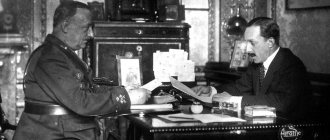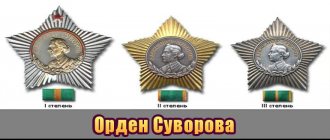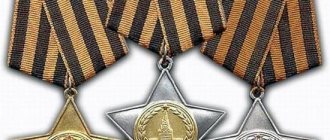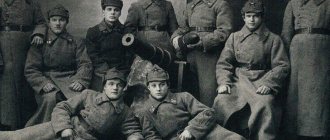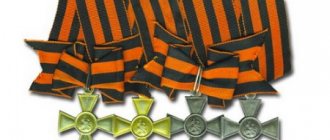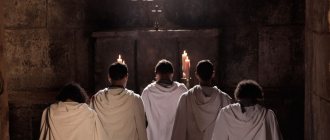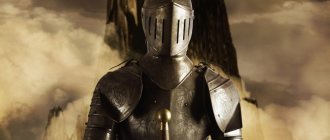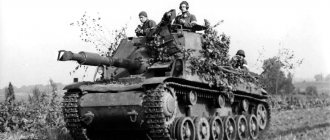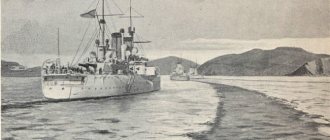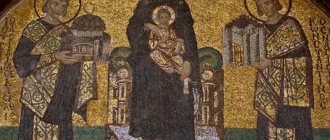Symbol of the Order of Santiago. Sword of Saint James (Jenny ODonnell / CC BY-SA 2.0)
The Order of Santiago (full name "Order of the Sword of Saint James") is a Christian religious-military order of chivalry that was founded in Spain in the Middle Ages. Like the Templars and Hospitallers, this brotherhood was created to protect pilgrims and fight against Muslims. However, unlike the above, the Order of Santiago performed its duties in Spain, not in the Holy Land. It continues to exist to this day, albeit as a civil association.
One of the four Spanish orders of chivalry
The Brotherhood of the Sword of Saint James is one of the four Spanish military orders. The other three are the Order of Calatrava, the Order of Alcantara and the Order of Montesa. According to legend, the Order of Santiago was founded by King Ramiro I of Asturias in the ninth century. The king achieved a great victory over the Moors during the Battle of Clavijo Castle in 844 AD. The Christian victory over the outnumbered Muslims was attributed to King Ramiro's appearance in a dream and subsequent participation in the battle by Saint James. This battle had a great influence on the formation of the national identity of the Spanish people and contributed to the adoption of St. James (Santiago) as the patron saint of Spain, and the area of Santiago de Compostela became an important center of pilgrimage, and pilgrims need to be protected and protected. If your child is given a lot of lessons and you want to help him do his homework and continue to relax, you can find help at https://resh.me
Battle of Clavijo (Corrado Giaquinto / Public domain)
The Empire on Which the Sun Never Sets
The following most important events happened, by coincidence, in the same year: 1492 from the Nativity of Christ.
- Firstly, the Reconquista finally ended: with the fall of Granada, the entire peninsula came under Christian rule.
- Secondly, America was discovered.
- Thirdly, through the efforts of the Grand Inquisitor (title) Thomas Torquemada, the Alhambra Decree was adopted, which made it possible to expel all infidels from Spain.
The decree was especially important because large-scale confiscations of the property of Muslims and Jews provided the treasury with enormous funds. Funding for the final stage of the Reconquista came directly through the apparatus of the Inquisition, and the origin of the money is beyond any doubt.
Following this first impulse, “golden galleons” soon began to sail across the Atlantic Ocean towards the metropolis.
Quite unexpectedly, in a place where there had never been any serious players in the European political arena, a large and incredibly rich kingdom arose.
Quite soon, Spain would acquire colonies on all the continents discovered by that time, spread from Chile to the Philippines, and take shape as the first world superpower.
But it is still only the turn of the XV-XVI centuries. Spain is already very rich and more or less united, but its army is not yet the kind that will strike fear into all enemies.
When was the Order of Santiago founded?
The Battle of Clavijo is questioned by many historians due to the lack of sufficient archaeological finds in the area, so the founding of the Order of Santiago in the ninth century is also highly questionable. Most historians agree that the order was created around the middle of the twelfth century. However, accurate data is not enough.
According to one version, the Order of the Sword of St. James was founded in 1171 by King Ferdinand II of Leon. On the way back from Badajoz to Leon, the king took control of the city of Caceres. It was there that he, the Bishop of Salamanca and 13 knights founded the Order of the Caceres Brothers, also known as the Order of the Sword of Saint James. In the same year, the order received its first charter from Cardinal Jacinto, legate of Pope Alexander III in Spain. The first Grand Master of the Order of Santiago was Pedro Fernandez de Castro. De Castro was a warrior who was on a pilgrimage to the Holy Land, where he crossed paths with the Tempiers and desired to found a similar order in his homeland.
Portrait of Ferdinand II. Isidoro Lozano. (museodelprado.es / public domain)
Knights and chivalry of three centuries. Part 7. Knights of Spain: Leon, Castile and Portugal
The spear pierced the shield of Don Pedro, It came out, but did not penetrate the flesh,
Its shaft was broken in two places. Bermudez did not sway, did not fall from the saddle, and returned with a blow for the blow that he took. The spear landed under the shield thorn, At once it pierced the shield halfway, It pierced two rows of triple chain mail, And it got stuck in the third, close to the heart, That’s why Fernando survived. The shirt, camisole and steel rings pressed into the meat into his palm... (Song about Sid. Translation by Yu. Korneev.)
One of Spain's most serious problems in the face of the Muslim threat was feudal fragmentation. It brought a lot of problems in other lands as well. But here in Spain, one half of which belonged to Christians and the other to Muslims, it had a special meaning. By 1030, the position of Christian Spain was as follows: it consisted of two kingdoms, Leon and Navarre, and also two counties - Barcelona and Castile. The territories that later became the kingdoms of Portugal and Aragon were either part of the former or still belonged to the Muslims.
Monument to Sil Compeador by Anna Huttington in Buenos Aires.
The Kingdom of Castile and León was the third and final political unification of León and Castile, occurring in 1230. And it could have happened earlier, especially since both kingdoms had already been united twice, but... each time they passed to the sons of the deceased monarch! So, from 1037 to 1065 they were ruled by Ferdinand I of Leon, who divided his possessions between his sons. Under King Alfonso VII they were united again. But... in 1157, Alfonso VII died, and again the kingdom fell apart, divided between his sons: Ferdinand II got Leon, and Sancho III got Castile. Thus, a state that strived for unification, due to feudal prejudices and nepotism, each time found itself divided again, and this happened in the face of a constant threat from the Moors!
Christian (left) and Arab warriors in Spain, 12th century. Rice. Angus McBride
As a result, the Reconquista of Islamic territory proceeded very slowly, intensifying only periodically. Only after the battle that took place on July 16, 1212 between the combined troops of Castile, Aragon, Navarre and Portugal and the army of the Spanish Moors of the Almohad dynasty at Las Navas de Tolosa, which the Christians won, did the situation change in their favor completely. Over the next fifty years, the Muslims lost everything except the emirate of Granada. Nevertheless, for more than two centuries, the Castilians were primarily concerned with sorting out relations with neighboring Christian states within Iberia, as well as participating in the Anglo-French Hundred Years' War. It is interesting to note that the battle of Las Navas de Tolosa was supposed to involve crusaders, participants in the crusade declared by the Pope, and those who arrived in Spain from various European countries. But literally on the eve of the battle they left the Spaniards’ camp, according to one version “because of the heat”, according to another - “overwhelmed by the devil and envy.” Simply put, the war on the peninsula lasted so long precisely because the expulsion of the Moors was by no means its primary goal. In essence, it was an ordinary feudal war, that is, the seizure of land and mining in a somewhat aggravated version due to its national and religious components.
Sword in sheath, dagger and helmet from Iran from the era of the Arab conquest of the 7th century. Length 100.3 cm. (Metropolitan Museum, New York)
However, one can only talk about the Arab conquest of Spain, as such, only with a stretch. The Arabs themselves represented only the elite of the conquerors, but in general, all the peoples of Africa were represented there, as well as the local population, who submitted to the conquerors and also supplied them with warriors in the future.
Spanish Knights 1197 Illustration from the Navarrean Illustrated Bible, Pamplona, Spain. (Amiens Metropole Library)
As for military affairs, the Castilian Reconquista had a number of interesting features that distinguished it from what was happening at the same time on the lands of the same France. It all started with the increasing role of heavily armed cavalry, which began in the 9th century. However, light cavalry continued to remain here in numbers completely unthinkable in Northern France. Of course, chain mail armor of the typical Western European form was also used here, but it was used only by a minority of riders. There is also the possibility that some of the Castilian light-armed horsemen were archers and could fire arrows from horseback. Urban militias also formed a significant part of the armies of the Spanish kingdoms, and included not only infantry, but also cavalry.
El Cid (Cid Compeador) and his warriors 1050-1075. Rice. Angus McBride.
The next stage in the military development of military Castile eliminated all these archaic relics. It is characterized by the adoption of French style of weapons, armor and fighting techniques. Already in the 13th century, the armor of Spanish and French knights became almost indistinguishable. The horses are also covered with blankets, the riders wear surcoats, and their coats of arms are depicted on shields and even on helmets. It should be emphasized here that the warriors were very hot in such weapons. Therefore, the Spanish military leaders, to a greater extent than the military leaders of England and France, had to pay attention to the timing of their military actions and not arrange them in the most intense heat.
Spanish knights on horses in blankets. "Pamplona Illustrated Bible and Lives of the Saints", 1200 (University Library of Augsburg)
It is interesting that the seals of that time have reached us, on which there are Catalan counts in striped surcoats, with striped shields, and their horses are dressed in striped blankets. That is, this symbol is very old and became the “passport” of the Catalan nobility a very long time ago.
Spanish Crusader fights the Moor, 1200-1300, Barcelona, Spain. (Manuscript from the Bibliotheca de San Lorenzo de Escori)
Armored infantry and widespread use of the crossbow were another local feature. If in France the infantry, as such, was the servants of the lord, and perhaps even mercenaries, then in Spain, where the townspeople constantly had to repel the raids of the Moors, or fight the local feudal lords, it was the infantry from the townspeople that very early began to play an important role . Accordingly, it was easier for the Spanish kings to control their troops, since, of course, the “feudal freemen” dominated them, but they already had troops at their disposal that strictly obeyed their orders, and... the orders of their commanders.
Spanish knights in tophelm helmets with riveted reinforcements in the shape of a crosshair. “Illustration from the manuscript of the Song of Saint Mary, 1284 (Royal Library of the Escorial, Madrid)
The illustration is from the same publication. Christian knights pursue the fleeing Moors.
It was in Spain that already in the middle of the 14th century, cavalry armed with crossbows appeared, that is, an important step forward was made here regarding the use of throwing weapons on the battlefield. Rice. Angus McBride
However, the Castilian military organization and its tactics were considered old-fashioned by the French and English. Apparently, this was due to the fact that the wars with the Moors on the Iberian Peninsula were considered by them as something very insignificant compared to their own confrontation. For example, the use of slingers in Spanish troops was generally considered an anachronism, while in battles with lightly armed Berber cavalry the effectiveness of the sling was quite high.
The sling is a scourge in the hands of Spanish slingers. Illustration 1050-1100 "Roda Bible", Catalonia, Spain. (National Library, Madrid)
The source base for the study of military affairs on the Iberian Peninsula is primarily miniatures in a number of very important illustrated manuscripts. Despite the fact that Andalusian manuscripts are extremely rare, they nevertheless exist, and they have a characteristic artistic style. On them we see warriors of the Iberian Peninsula, both Christians and Muslims, so in general there are quite enough miniatures in the manuscripts. There are also effigies, although due to a series of revolutions and civil wars, many of them suffered. There are also literary monuments, for example, the famous “Song of Sid”. The work has been known since the end of the 12th - beginning of the 13th century. A copy of the 1207 manuscript has also survived, although in poor condition. Unfortunately, the translation of the poem from Spanish into Russian was done completely illiterately. Although it is believed that it is closer to historical truth to a much greater extent than other similar works of heroic epic, and gives a completely truthful picture of the events that took place in Spain at that time. So, Sid wears a sword in it, but what kind of sword is there in the 13th century? The above epigraph is also very indicative. “Shield with a spike” - in fact, this is a shield with a pointed umbo. On the other hand, it also contains valuable information that the spears of knights in equestrian combat pierced shields if they did not hit the umbon, and that the knights’ chain mail could also be triple knitted, that is, six rings were connected at once, that is three with three. True, such chain mail had to be very heavy. So it is possible that this is a purely artistic exaggeration.
A very interesting “picture” depicting Spanish horse archers. They use horses for movement, but dismount to shoot at the enemy. Miniature from "Floral History of the Land of the East", 1300-1325. Catalonia, Spain. (National Library, Madrid).
As for Portugal, at the beginning of the 11th century it was part of the Kingdom of Leon, and culturally and militarily it had much in common with Galicia to the north. Moreover, they were united by the fact that both of these areas were largely free from military influence from France. By the 12th century, the process of Portuguese autonomy was effectively completed, so that already in 1143 Portugal acquired the status of a kingdom, after which its military efforts were concentrated on defending the eastern border with Castile and securing independence. The emergence of Portugal's interest in expansion at sea dates back to the 14th century, but the Portuguese had not yet undertaken long voyages at that time.
Battle of Las Navas de Tolosa. Artist Francisco Van Halen (Prado Museum, Madrid)
The role of the cavalry increased as the Christian offensive against Islamic Andalusia developed, especially since the main form of war became raids by mounted troops into enemy territory in order to capture booty and prisoners, as the same “Song of the Cid” narrates. But since most of the country consists of rocky mountains and valleys, it was quite difficult for cavalry, especially heavily armed ones, to operate here. Contacts with the British led to the spread of the long yew bow here in the 14th century, replacing the compound bows used by the Arabs in Christian armies. It was then that knights from England and France began to arrive in Spain in large numbers, who brought with them the experience of the battles of the Hundred Years' War. Previously, Spanish military art had placed primary emphasis on the defense and siege of castles and fortresses and ambushes and raids, while avoiding large-scale battles involving large numbers of warriors. French historian Jean Froissart, drawing on the experience of veterans who participated in the Hundred Years' War, wrote about Spanish soldiers as follows:
It is true that they look good when mounted, spurs thrown aside to their advantage, and they fight well at the first onslaught; but as soon as they throw two or three javelins and strike with their spears, without throwing the enemy into confusion, they give the alarm, turn their horses and flee as quickly as they can.
Monument to Sid in Burgos
Such tactics were characteristic of a new type of army at that time - the jinetes, light cavalry, which had light armor, a saddle with a low pommel, and short stirrups, as well as agile horses of the Andalusian breed, which allowed them to fight on equal terms with the Muslim cavalry, which used Berber North African horses. The Jineta's weapons were two or three darts and a light spear, which he also used as a throwing spear. Moreover, one of the sources describes that during the siege of Lisbon, one such dart, thrown by a chinet, pierced a knight’s plate armor, his chain mail, a quilted gambeson and came out of his back. At first, the Hinetes used only adarg shields, borrowed from the Arabs, but already at the end of the 14th century they began to wear typical European quilted aketons.
References: 1. Nicolle, D. Arms and Armor of the Crusading Era, 1050 – 1350. UK. L.: Greenhill Books. Vol.1. 2. Nicolle, D. Armies of the Muslim Conquest. L.: Osprey Publishing (Men-at-Arms No. 255), 1993. 3. Verbruggen JF The Art of Warfare in Western Europe during the Middle Ages from the Eight Century to 1340. Amsterdam - NY Oxford, 1977. 4. Nicolle, D. El Cid and the Reconquista 1050-1492. L.: Osprey Publishing (Men-at-Arms No. 200), 1988. 5. “Song of Sid”, various editions.
To be continued…
Why was the Order of Santiago founded?
That is, the main task of the order was to protect Caceres, and he performed his functions with honor. In 1173, the Almohads attacked Caceres with the goal of returning the city to their rule. The city was captured, the knights refused to surrender and continued to fight. Captured knights were beheaded after the battle and their heads were displayed as a warning to Christians. The surviving members of the brotherhood formed an alliance with the Order of St. Augustine (the knights themselves also followed the Augustinian Rule) and were now responsible for the protection of the tomb of St. James of Compostela and the pilgrims to him.
Knight of the Order of Santiago. (Lunstream/Adobe)
Bertrand de Born (1140-1215)
The knight and troubadour Bertrand de Born was the ruler of Périgord, owner of the castle of Hautefort. Dante Alighieri portrayed Bertrand de Born in his "Divine Comedy": the troubadour is in Hell, and holds his severed head in his hand as punishment for the fact that in life he stirred up quarrels between people and loved wars.
And, according to Dante, Bertrand de Born sang only to sow discord.
De Born, meanwhile, became famous for his courtly poetry. In his poems, he glorified, for example, Duchess Matilda, the eldest daughter of Henry II and Alienora of Aquitaine. De Born was familiar with many troubadours of his time, such as Guilhem de Bergedan, Arnaut Daniel, Folke de Marseglia, Gaucelme Faidit and even the French trouvère Conon of Bethune. Towards the end of his life, Bertrand de Born retired to the Cistercian Abbey of Dalon, where he died in 1215.
Who was the founder of the Order of Santiago?
Thanks to the defeat in Caceres, the knights lost the patronage of Ferdinand II. They found a new patron in Alfonso III, King of Castile. In 1174, Alfonso III granted the order the castle and village of Uclés (in Cuenca), which henceforth became its new headquarters. Moreover, using his influence, Alfonso III forced Pope Alexander III to issue a decree recognizing the Order of the Sword of St. James as a religious order. Since then, Alfonso III has been considered the founder of the order along with Ferdinand II.
Ulrich von Liechtenstein (1200-1278)
Ulrich von Liechtenstein did not storm Jerusalem, did not fight the Moors, and did not participate in the Reconquista. He became famous as a knight-poet. In 1227 and 1240 he made travels, which he described in the courtly novel “Serving the Ladies.”
According to him, he walked from Venice to Vienna, challenging every knight he met to battle in the name of Venus. He also created The Ladies' Book, a theoretical work on love poetry.
Lichtenstein's "Serving the Ladies" is a textbook example of a courtly novel. It tells how a knight sought the favor of a beautiful lady. To do this, he had to amputate his little finger and half of his upper lip, defeat three hundred opponents in tournaments, but the lady remained adamant. Already at the end of the novel, Lichtenstein concludes “that only a fool can serve indefinitely where there is nothing to count on for reward.”
Mid-7th century – 9th century
So, you are a harsh northerner - a Norman or a German, for example. Before battle, you put on short chain mail without a hood over your shirt and a Wendel helmet - round, like a bowler hat, and equipped with a protective half-mask that covers the upper part of the face.
Vendel helmet. Berig) / wikipedia
You will defend yourself from the enemy with the help of a round flat wooden shield with a metal plate in the middle, called an umbon. Your shield has a comfortable leather strap, allowing you to carry your shield on your shoulder or neck during long hikes. But you don’t have a helmet with horns. Nobody really wore them back then.
William Wallace (c. 1272-1305)
William Wallace is a national hero of Scotland, one of the most important figures in its wars of independence in 1296-1328. His image was embodied by Mel Gibson in the film “Braveheart”.
In 1297, Wallace killed the English Sheriff of Lanark and soon established himself as one of the leaders of the Scottish rebellion against the English. On September 11 of the same year, Wallace's small army defeated a 10,000-strong British army at Stirling Bridge. Most of the country was liberated. Wallace was knighted and declared Guardian of the Realm, ruling on behalf of Balliol.
A year later, the English king Edward I again invaded Scotland. On July 22, 1298, the Battle of Falkirk took place. Wallace's forces were defeated and he was forced into hiding. However, a letter from the French king to his ambassadors in Rome dated November 7, 1300 has been preserved, in which he demands that they provide support to Wallace.
Guerrilla warfare continued in Scotland at this time, and Wallace returned to his homeland in 1304 and took part in several clashes. However, on August 5, 1305, he was captured near Glasgow by English soldiers.
Wallace rejected accusations of treason at trial, saying: “I cannot be a traitor to Edward, because I was never his subject.”
On August 23, 1305, William Wallace was executed in London. His body was beheaded and cut into pieces, his head was hung on the Great London Bridge, and his body parts were exhibited in Scotland's largest cities - Newcastle, Berwick, Stirling and Perth.
